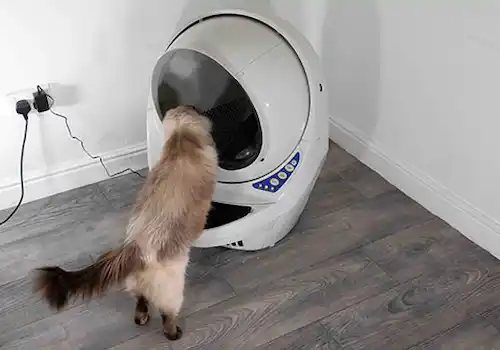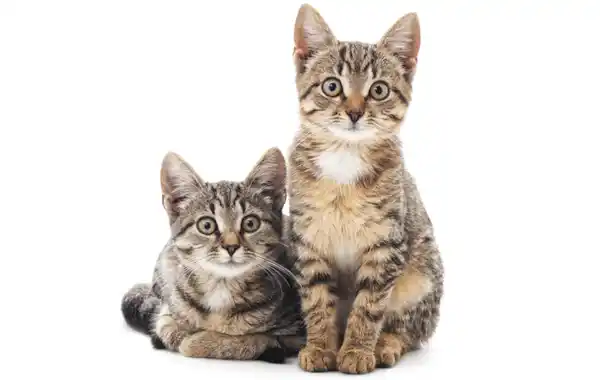There’s a whole day dedicated to lauding our feline friends! We’ll be taking part in the celebrations — and you can too. In preparation of the day dedicated to happy cats, animal behaviourist Vicky Halls gives us 10 signs of feline happiness…
In a couple of weeks, there is an important date in the calendar for cat lovers — as Saturday August 8, 2020 is International Cat Day! First established over 15 years ago, the day sees people celebrate their feline friends and the joy they bring. This year, custodianship of the day has passed to leading feline charity International Cat Care (iCatCare), which is working with a range of partners to share knowledge and ensure the festivities are better than ever!
Based in the UK, iCatCare (www.icatcare.org) believes in a world where cats have the best lives possible and strives towards this by sharing education and advice for those who live and work with cats across the globe. Fitting with their mission, the day this year will focus on helping people to understand the needs of all cats and how we can give them great lives.
From quizzes and competitions to win great prizes, to blogs and live Q&As — you can find out about all the events from the official website: www.internationalcatday.org
As we celebrate, our kitties are going to be taking over social media (even more than normal!). iCatCare are running the ‘contented cat challenge’ where cat lovers will be asked to post a picture of their cat using #happycat and nominate someone else to do the same. As we prepare to share our happy cats and celebrate all things feline, we asked iCatCare to give us inspiration for the pictures of our cats and teach us more about how we can tell when our cats are truly happy.

So, animal behaviourist Vicky Halls gives us 10 signs of feline happiness…
When we talk about happiness in our cats, it is human nature to think about the things that make people happy. However, when we think about what makes cats happy, we have to think more broadly and start from a very different place, before understanding what that looks like and how we recognise it.
We also have to remember that cats are not all the same. Each cat is an individual; think about every cat you have known, were any two identical in their behaviour? Cats are notoriously hard to read — as a self-reliant species it doesn’t pay to wear your heart on your sleeve — so we have to rely on getting to know cats one at a time and learning what our own cats are trying to tell us.
To help you on your quest to establish the nature of your cat’s happiness, here are 10 ways that cats may express their joy:
1. How your cat interacts with you
There is a huge variation in the way cats interact with us, but there is one thing that all cats have in common: If your cat runs (or walks purposefully) towards you with their tail held vertically, then he is definitely happy to see you!
If, on the other hand, you have to chase them in order to have a welcome home cuddle, then it is likely that happiness is not the overwhelming emotion that your cat is feeling. Leaving them to make the first move is often a good way to find the happiest compromise when it comes to those loving moments. Choice and control make cats feel secure and safe — these probably rank highly on the cat happiness scale.

2. Resting
Cats love to sleep and rest, but how and where they choose to do it and for how long, is all relevant. For example, resting with the paws folded under the chest would suggest that the cat is relaxed and feels no urgent need to escape at short notice. Contrast this with a cat that sits with hunched shoulders and front paws flat on the ground ready to run. If your cat is sleeping on its back on a sunny lawn or on the carpet indoors, with all four legs spread-eagled and belly exposed, you can probably score your cat highly for relaxation and happiness at that moment!
Sleeping curled up on your lap and purring is one of the greatest rewards for us owners, as we feel the cat is pretty happy with this situation. If the cat then comes back for more, we can assume it is a rewarding behaviour for them.
3. Curiosity
Curiosity may traditionally be considered to be the cat’s ultimate downfall, but showing a genuine interest in its environment is an intrinsic part of what it is to be a cat and can be viewed as a positive sign. However, as with everything, moderation is good — rushing manically from one window to the next, pawing at doors, and being hypervigilant may be signs of anxiety, fear, or frustration. But despite the adage, the right curiosity can be the sign of a happy kitty!
4. Good appetite
We know that when cats are unwell or feel insecure, they may not want to eat. So, having a healthy appetite and being an ideal weight and body shape is a good sign that your cat is probably happy. Cats who are overweight may be spending time eating as a displacement activity for something missing in their lives. The idea of comfort eating in cats is taken seriously by vets and pet behaviourists. Equally, not eating enough to maintain body weight should be investigated too.

5. Purring
Everyone recognises the soothing sound of a cat purring, so if your cat purrs when he sees you or when you are stroking him, then this is a strong indication that he is happy. However, research has identified an additional type of purr which seems to be more ‘demanding’ in nature. There is also evidence that the cat purrs at times of great distress, but understanding this should enable you to distinguish a happy purr from a more negative one — it seems cats do communicate their emotions with us through their purrs!
6. Vocalising
When it comes to other cat sounds (or vocalisations), we love nothing more than when our cats meow in conversation with us. If you and your cat communicate in this way, with you saying something followed by a response from your cat and so on, this probably means your cat is happy. However, you need to understand the context — if your cat combines the meowing with pacing, staring, or pawing at you, this may just mean that he wants something and you are not making it happen quickly enough! If you have a silent cat (and there are many out there), it doesn’t necessarily mean that he can’t be happy, he will just express himself in different ways.
7. Toilet habits
It may sound strange to say that a happy cat has acceptable toilet habits, but one sure fire way to establish whether your cat is happy is more about watching for signs that would indicate the opposite. It is probably safe to say that, for one reason or another, a cat that goes to the toilet in the home in any place other than the litter tray provided is not happy about something or is not feeling well. Having somewhere cats feel safe and comfortable to toilet is a sign of a happy cat — probably not the best example for your picture on International Cat Day though!

8. Health
Happiness is about physical health as well as mental well-being, so a cat with a shiny coat and no obvious signs of illness is immediately ahead on the happiness stakes, than one who is not feeling well. As owners, we can provide preventive healthcare: remove parasites, vaccinate against diseases, and feed a good diet. If we have a long-haired cat, we can groom regularly to ensure there are no knots or mats in the coat that will cause itchiness or pain. We can monitor our cats for the subtle signs that they are not feeling well (for example, changes in behaviour or eating habits) and take action immediately by contacting the vet’s. Health is an important foundation for happiness.
9. Play
A really good indicator for cat happiness is play, where a cat is completely focused on stalking and pouncing on imaginary prey to fulfil their natural predatorial instincts. Play is a leisure activity; it is rare for a cat to indulge in such play if it is feeling threatened or fearful. For cats with access to outdoors, the environment can provide everything they need, either going for the real-life hunting experience or chasing leaves. For cats without that access to stimulation, owners must ensure that their cats have a simulated version indoors. Toys come in all shapes and sizes, both for individual play and for games that you can join in with — you can experiment to find out what your cat enjoys.

10. Facial expression and body posture
Most of the obvious and easily recognised facial expressions and body postures in cats are those associated with negative emotions, such as fear (flattened or rotated ears, hunched body, wide eyes, dilated pupils, open mouth) — seeing these signs indicate your cat is not feeling happy. Some owners would say that in moments of feline pleasure they swear they can see their cats smiling — that may well be the case, but generally you could say that a cat with a relaxed facial expression and body posture (ears upright and facing forward, eyes almond-shaped with pupils that are not fully dilated, whiskers that are not flattened backwards, body not tense or hunched) may well be feeling A cat with his tail up running toward you is a positive sign! its own kind of happiness.
So, look out for these signs of happiness and grab the perfect picture to share on International Cat Day!
International Cat Day – how to get involved
There is going to be a host of brilliant activities on August 8 to celebrate International Cat Day. To get involved:
- Head over to www.internationalcatday.org and sign up to International Cat Day email alerts on activities, and how to participate and attend events on the day.
- Follow International Cat Day on social media, join the conversation, and share your stories and pictures.
- Hashtag #happycat and take the ‘contented cat challenge’ to show your cat as happy as he or she can be.
- Enjoy the events including live talks, Q&As, blogs, feline advice, social media fun, and podcasts.
Visit www.internationalcatday.org to find out about all the latest activities.







